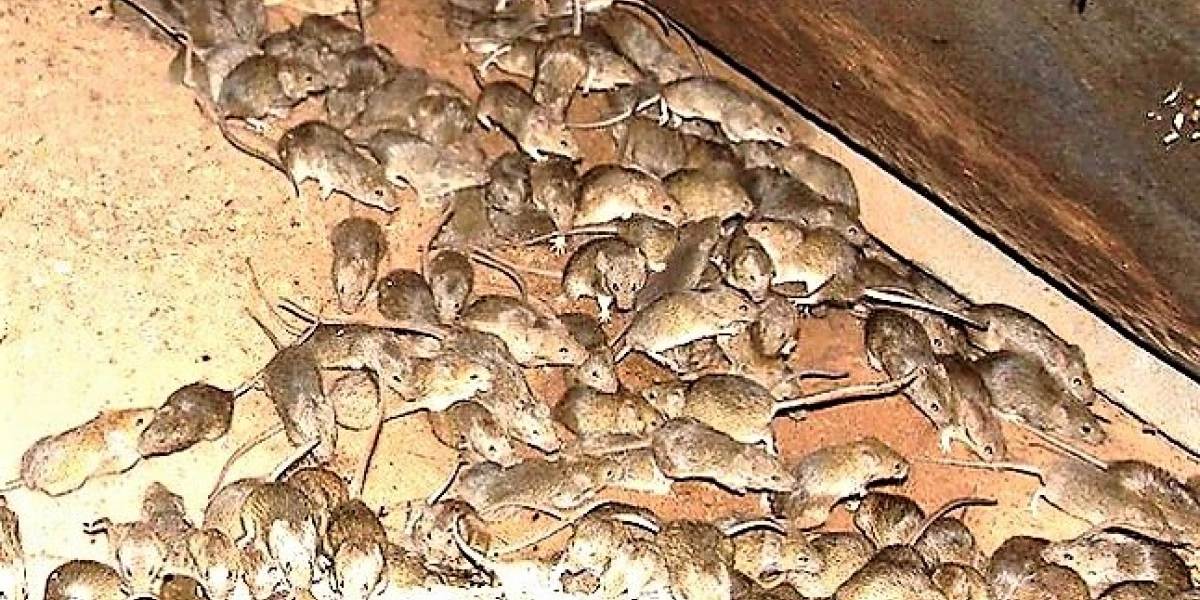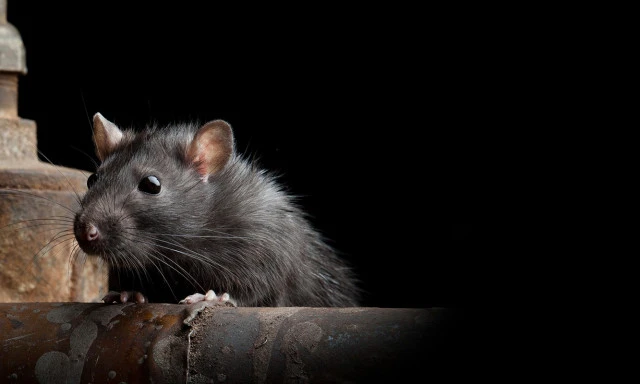How Many Mice?
In order to emphasise the breeding capacity of the house mouse I have often used the 'story' told to me by a scientist working for one of the largest pest control companies; that if you put 2 mice, one male and one female, into the United Kingdom and there was no restriction on food and shelter, and no predators, disease or rodent control, within two years the UK could be knee-deep in mice.
I thought I should do the calculation:
Assuming
- At time 0 one baby male and one baby female mouse
- Females mature at 6 weeks and breed immediately
- Gestation takes 3 weeks
- Litters are an average of 8 babies
Then the progression is the following, approximately a doubling every three weeks:
| Week | Females | Males | Babies | Total Mice |
| 3 | 1 | 1 | 0 | 2 |
| 6 | 1 | 1 | 0 | 2 |
| 9 | 1 | 1 | 8 | 10 |
| 12 | 1 | 1 | 8 | 18 |
| 15 | 1 | 1 | 8 | 26 |
| 18 | 5 | 5 | 40 | 66 |
| 21 | 9 | 9 | 72 | 138 |
| 24 | 13 | 13 | 104 | 242 |
| 27 | 33 | 33 | 264 | 506 |
| 30 | 69 | 69 | 552 | 1,058 |
| 33 | 121 | 121 | 968 | 2,026 |
| 36 | 253 | 253 | 2,024 | 4,050 |
| 39 | 529 | 529 | 4,232 | 8,282 |
| 42 | 1,013 | 1,013 | 8,104 | 16,386 |
| 45 | 2,025 | 2,025 | 16,200 | 32,586 |
| 48 | 4,141 | 4,141 | 33,128 | 65,714 |
| 51 | 8,193 | 8,193 | 65,544 | 131,258 |
| 54 | 16,386 | 16,386 | 131,088 | 262,346 |
| 57 | 32,772 | 32,772 | 262,176 | 524,522 |
| 60 | 65,544 | 65,544 | 524,352 | 1,048,874 |
| 63 | 131,088 | 131,088 | 1,048,704 | 2,097,578 |
| 66 | 262,176 | 262,176 | 2,097,408 | 4,194,986 |
| 69 | 524,352 | 524,352 | 4,194,816 | 8,389,802 |
| 72 | 1,048,704 | 1,048,704 | 8,389,632 | 16,779,434 |
| 75 | 2,097,408 | 2,097,408 | 16,779,264 | 33,558,698 |
| 78 | 4,194,816 | 4,194,816 | 33,558,528 | 67,117,226 |
| 81 | 8,389,632 | 8,389,632 | 67,117,056 | 134,234,282 |
| 84 | 16,779,264 | 16,779,264 | 134,234,112 | 268,468,394 |
| 87 | 33,558,528 | 33,558,528 | 268,468,224 | 536,936,618 |
| 90 | 67,117,056 | 67,117,056 | 536,936,448 | 1,073,873,066 |
| 93 | 134,234,112 | 134,234,112 | 1,073,872,896 | 2,147,745,962 |
| 96 | 268,468,224 | 268,468,224 | 2,147,745,792 | 4,295,491,754 |
| 99 | 536,936,448 | 536,936,448 | 4,295,491,584 | 8,590,983,338 |
| 102 | 1,073,872,896 | 1,073,872,896 | 8,590,983,168 | 17,181,966,506 |
So after 2 years there could be more than 17 trillion mice. Assuming a mouse weighs 20 g, 17 trillion would weigh about 340,000 tonnes (metric tons).
To make the 'story' more relevant I have chosen New Zealand rather than the UK as the home for these mice (the areas are similar, 268,000 km2 vs 242,000 km2).
How deep would 17 trillion mice be in New Zealand? This would equate to about 0.063 mice per square metre of New Zealand. Scary but not knee-deep, not even ankle-deep.
However, this assumed the original mice were babies. What if we start with a pair of adult mice (6 weeks old)? So let's add another 6 weeks to our progression.
| Week | Females | Males | Babies | Total Mice |
| 105 | 2,147,745,792 | 2,147,745,792 | 17,181,966,336 | 34,363,932,842 |
| 108 | 4,295,491,584 | 4,295,491,584 | 34,363,932,672 | 68,727,865,514 |
Now we have nearly 70 trillion mice........it is getting crowded in New Zealand. This equates to 0.254 mice per square metre, one mouse every 4 square metres. Considering they would be jumping about I think we can say 'tuck your trousers in your socks!' But not ankle-deep.
We wouldn't have to wait much longer to be ankle-deep. Assuming a mouse to be about 20 cm2 then 500 per square metre would be one layer of mice. At week 144 we would reach 1050 mice per square metre (ankle deep) and at week 156 (3 years) we reach 16,805 mice per square metre, which would, most certainly, be knee-deep. So maybe the story should be New Zealand could be knee-deep in mice after 3 years.
| Week | Females | Males | Babies | Total Mice |
| 156 | 281,509,336,449,024 | 281,509,336,449,024 | 2,252,074,691,592,190 | 4,504,149,383,184,550 |
Thankfully, mice are controlled, they do have a few predators, they do get diseases, food and shelter are not always available and they do not always breed to their full potential. But what this progression does show is that they will breed quickly to a point where there is a limiting factor and that can still be a lot of mice.
David Brittain
Kiwicare


